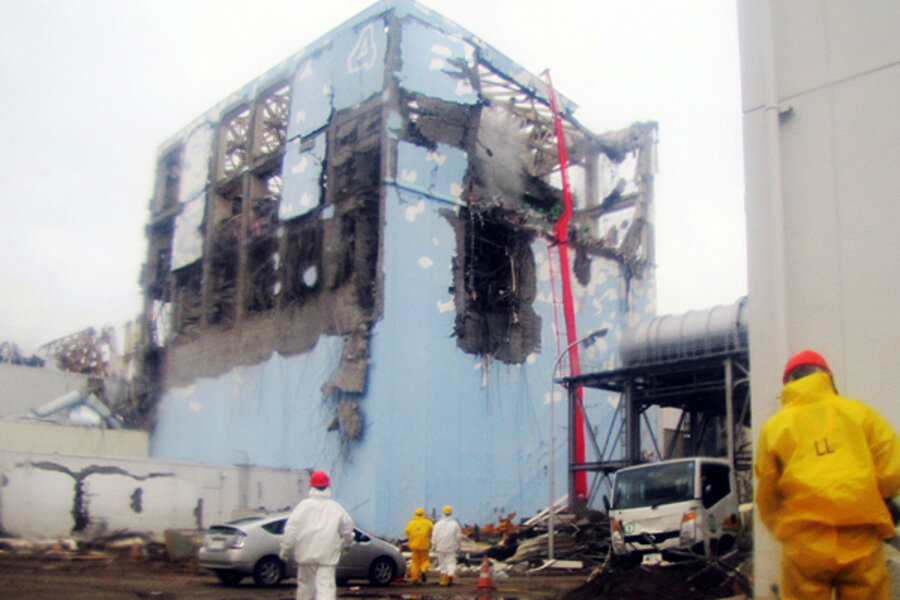Japan nuclear crisis: Why are the spent-fuel pools so hard to control?
Loading...
| Washington
As workers struggle to bring the Fukushima I nuclear plant back under full control, spent-fuel pools appear to be a source of continuing problems. On Tuesday morning, one pool was so hot that its remaining water was either boiling or close to it, according to the Associated Press.
Emergency crews dumped 15 tons of seawater into the pool to cool it to about 105 degrees F., Japanese authorities said later in the day.
If heat in the pool continues to build and water boils down and fuel rods stored in the pool are exposed, more radiation might escape into the atmosphere.
Yet firetrucks and other water-pumping equipment have been shooting streams of water at these pools for days during the Japan nuclear crisis. Why are they so proving so difficult to manage?
The pools at the Fukushima complex are just that – open basins resembling swimming pools. Six are perched on a sort of mezzanine above and adjacent to reactor containment vessels. They’re about 40 feet long by 30 feet wide by 36 feet deep, though they vary in size.
In total they can hold about 1,300 to 1,400 metric tons of water, serving as both a shield to keep radiation from escaping and a coolant to lower the residual heat that spent fuel rods generate.
The pools contain anywhere from 400 to 700 fuel-rod assemblies, according to data compiled by the Union of Concerned Scientists. These assemblies sit on racks just above the pool floor. During normal operation, the water level in the pools is kept about 30 feet above the top of the assemblies.
But these are not normal times. Though electric lines have now been hooked up to all six reactor units, the pumps that circulate cooling water inside reactor buildings are not yet working. Some have been damaged and will need to be replaced.
Temporary pumps and firetrucks are doing what they can to keep water in the pools. A powerful cement-pumping truck that will be used to shoot water, greatly increasing pumping capacity, arrived at Fukushima on Tuesday, according to Japanese authorities.
But Fukushima workers “don’t have the array of pumps they might otherwise have,” said David Lochbaum, director of the nuclear safety project at the Union of Concerned Scientists, in a Tuesday phone briefing for reporters.
It’s possible that the workers are thus practicing triage, disconnecting pumps from fuel pools in order to rush water through reactor cores, or an adjacent pool that is in greater danger, said Mr. Lochbaum.
Boiling water by itself is not a danger, he pointed out. The problems would begin if water boiled away, exposing fuel rods. If a pool is fully filled, that would take some time.
“That might be a strategy that they are employing, based on the limited array of equipment they have at the moment,” he said.
It is also possible that one or more of the pools is leaking. The sides of the pools have doors, which open to allow cranes to move fuel-rod assemblies from the reactor to the pool. These doors have inflatable seals that guard against leakage.
“If a seal is deflated, that is fairly significant damage,” said Lochbaum.





